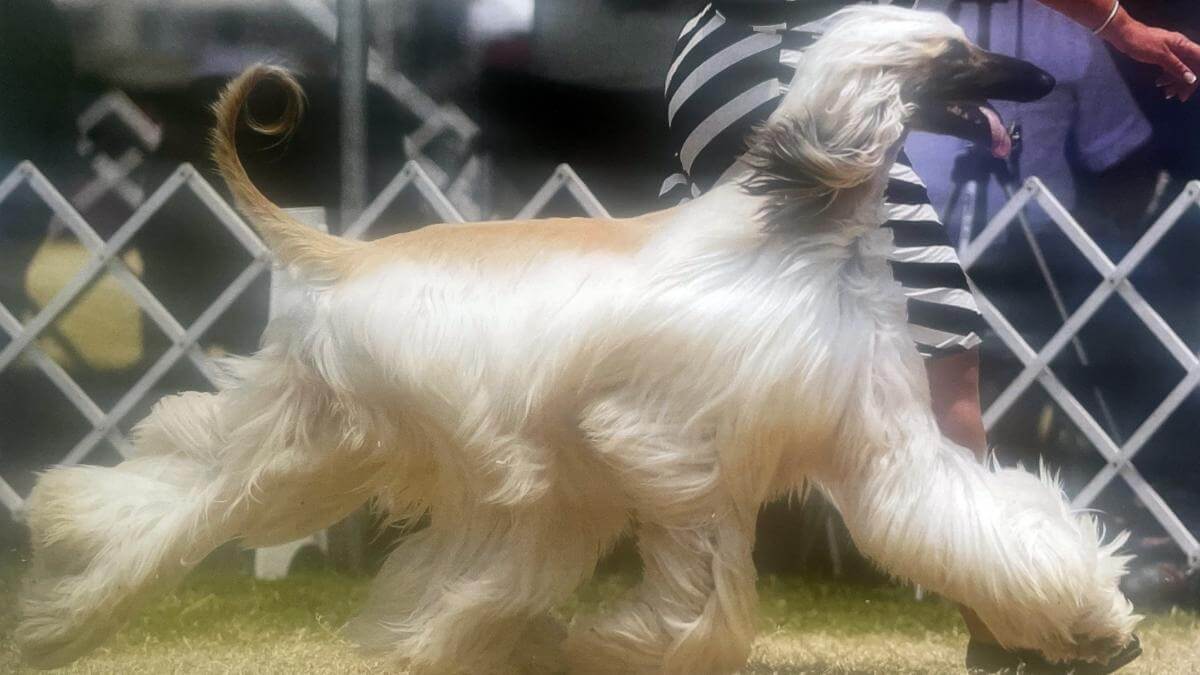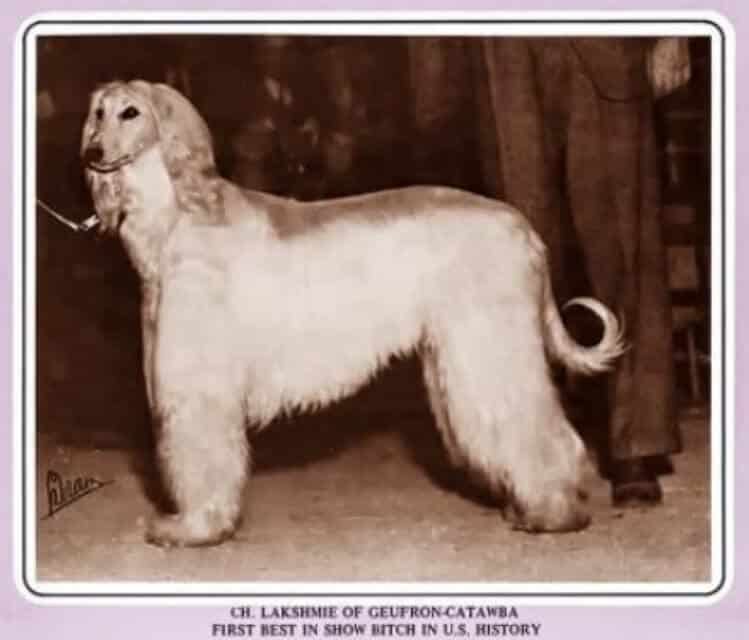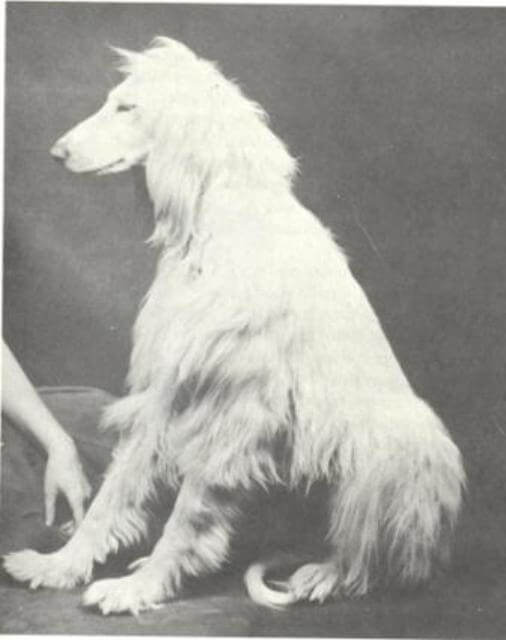
Home » It’s a Numbers Game…

The Afghan Hound, one of the world’s oldest breeds, is a true “heritage” breed, one that captures the imagination. One can almost smell the incense, its history shrouded in mystery and vestiges of a bygone time. Obviously, the Afghan Hound in its native land has unfortunately been relatively decimated after the Soviet invasion in 1979 and subsequent upheavals, including the Taliban, but what about its Western counterparts in the United States?

The Afghan Hound first made its appearance, from England, to the US in 1926, with a handful of hounds that were imported from the Bell-Murray lines of England, but very few left any pedigree influence. The Roaring 20s were coming to a close, and by 1931, Zeppo Marx entrusted Phyllis Robson, the editor of the English Dog World, to procure a breeding pair with “good coat,” and thus, Asra of Ghazni and Westmill Omar came to the US. The two main breeding strains in England, Bell-Murray and Ghazni, the former a more elegant, racy outline with lighter coat, and the latter, a more closely coupled, more coated line, were combined in the US, with American fanciers preferring the nicer points of each. The American show Afghan Hound was born.
In the first half of the 20th century, the Afghan Hound steadily grew in popularity. Its notoriety spread with the exciting Westminster Best in Show win by Ch. Shirkhan of Grandeur with his colorful breeder/owner-handler, Sunny Shay, in 1957. The Afghan Hound became a darling of the advertising industry and of fashion magazines, with numerous appearances in print media. The Afghan Hound became a staple in the show ring, but its true population explosion was yet to happen. The hound, with its long, flowing locks, seemed to literally be made for the 1960s and 1970s—the flower child of the purebred dog world. This is when many fanciers who are still with us obtained their first Afghan Hound.
The breed’s surge in popularity caught even the Afghan Hound fancy by surprise. In 1955, it took seven dogs for a 3-point major in California, but by 1974 you would need an entry of 42 class dogs for a 3-point major! In 1965, 1,820 Afghan Hounds were registered by the American Kennel Club. By 1973, 10,549 hounds were registered, more than quintupling the breed’s registrations in eight short years! With this surge in popularity, many people who were not good fits for a large, independent, quirky, sensitive yet proud sighthound that needed exercise and much coat care obtained one, often to a sad end. In fact, it is not unusual to talk to people over 70 years of age who only have negative memories of their family member’s or neighbor’s Afghan Hound, who often got loose, was matted, untrained, and generally unruly.

The breed’s popularity continued well into the 1980s, but by the 1990s the Afghan Hound’s population and AKC popularity were seeing a significant decline. In fact, if you were to visit the Afghan Hound Club of America’s parent club website in the early 2000s, much of the content in the headings for new owners were largely discouraging. Who could blame our fancy, when many hounds and humans were burned in the decades immediately prior?
In the 2000s, the Afghan Hound’s AKC statistics and registration numbers continued to fall. Obviously, the serious economic downturn in 2008 did not help in regards to a large hound with space and coat demands. When we obtained our first Afghan Hound in 2002, there were about 700 hounds registered per year. In the last year, a little over 300 hounds were registered by the AKC. The numbers are sobering, and while we will likely never be as popular as in the 1970s, we as fanciers and protectors of an ancient breed do need to be aware of what a razor thin wire we are treading. A shrinking genetic pool can often be the first harbinger of doom, and we need to be aware of this.

So, as guardians of an ancient, gorgeous, almost mythical breed as is our Afghan Hound, what can be done to ensure its continued existence into the future? We will likely never see a repeat of the population boom of the 1970s (nor, in all honesty, should we), but what do we do to continue being relevant? I think it comes down to encouraging newcomers. Yes, we were all new and nervous, perhaps, setting foot in a dog show arena the first time, or at a breeder’s home, to meet this breed that we essentially never see in public at a box pet food chain store, at a ball game, or at a friend’s house. It takes some element of pluck, self-starting, and even courage to decide you would like to have an ancient and rare breed to be your companion. We as breeders should try to encourage all homes that would otherwise be considered good, responsible homes, to visit, if possible, to meet an Afghan Hound. This is how my husband, Eddie, and I met our first Afghan back in 2002 at a small dog show in Montgomery. Neither of us had been to a dog show before, and there was a definite leap of faith in driving two hours south of our then home in Birmingham in the hopes of seeing Afghan Hounds. We still remember the black-masked red bitch a nice lady brought to the show; her name was Camille. This was 23 years ago, and that meeting was memorable and part of the reason we included an Afghan Hound in our world and why we are now smitten with the breed, having bred numerous Conformation and Field Champions, and why we cannot seriously imagine our future without one.
So, whether you are an Afghan Hound fancier, or own another breed with similar population perils, sowing kindness, support, and encouragement, especially with young owners, can go a long way. We have placed multiple of our hounds with first-time Afghan Hound homes, and none have disappointed. (We do utilize a detailed questionnaire and contracts.) Remember, none of us will be here forever, but hopefully our beloved breeds will.
Miller, Connie and Edward M. Gilbert. The Complete Afghan Hound. Howell Book House. 3rd edition, 1975.
